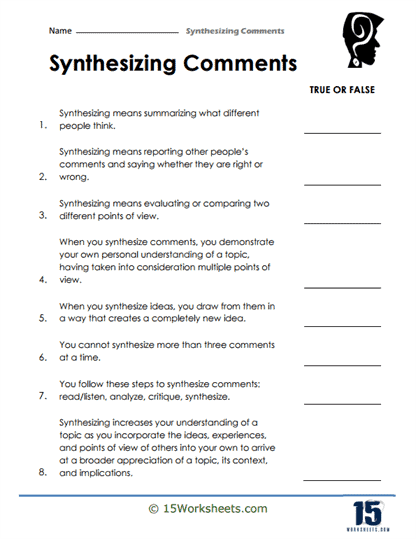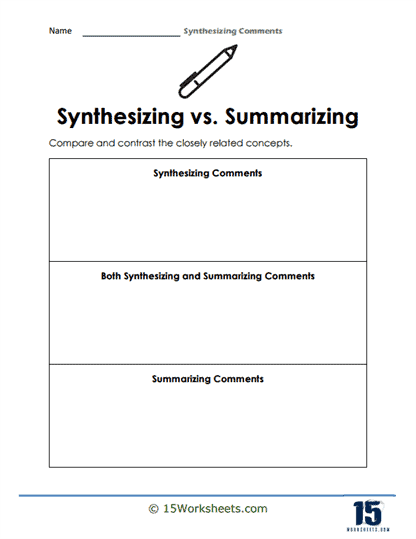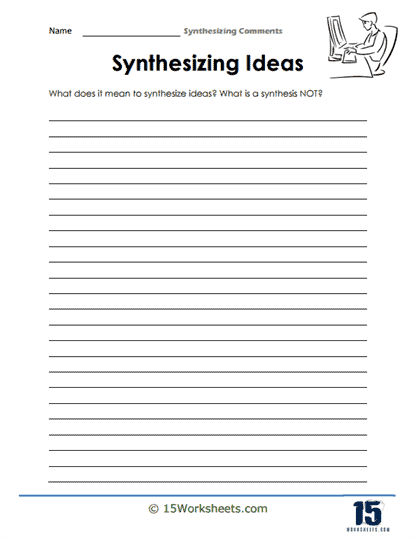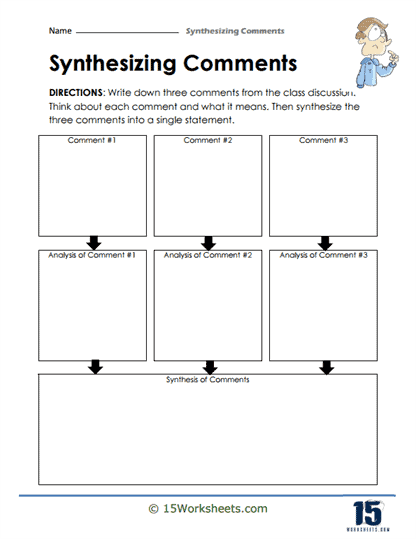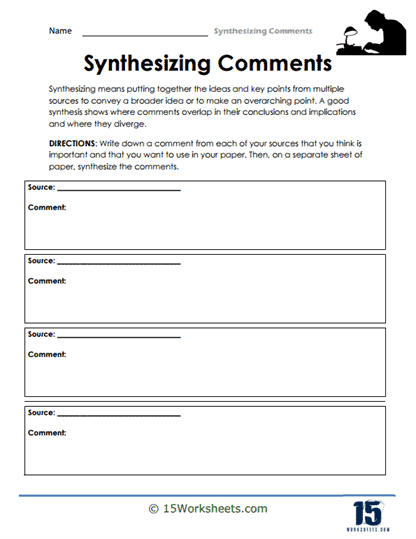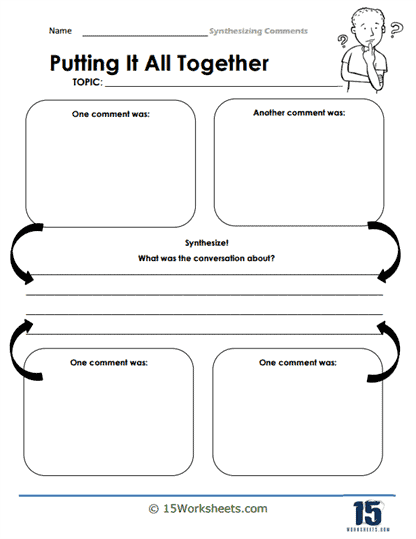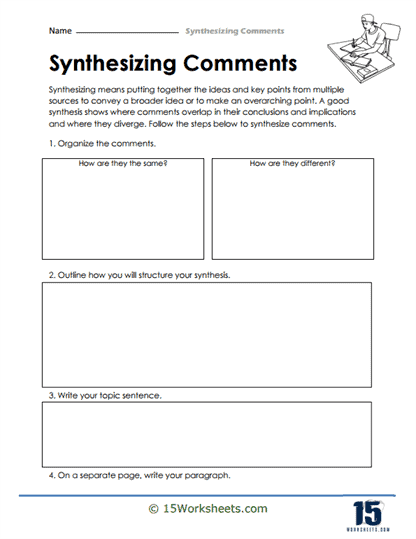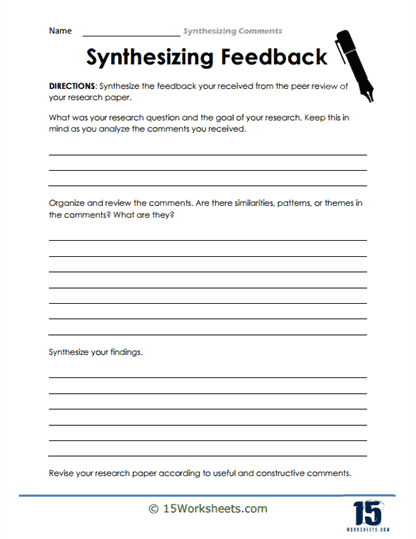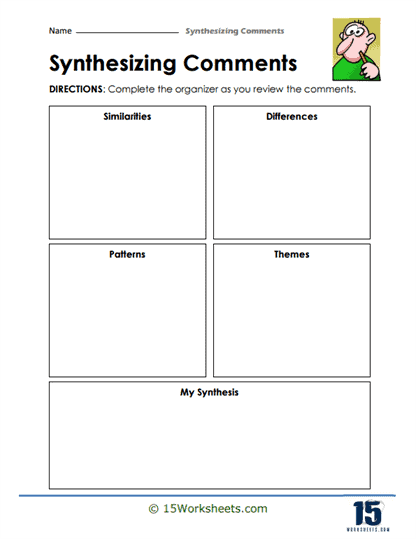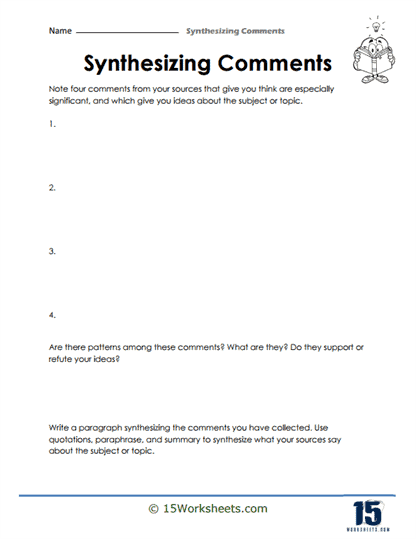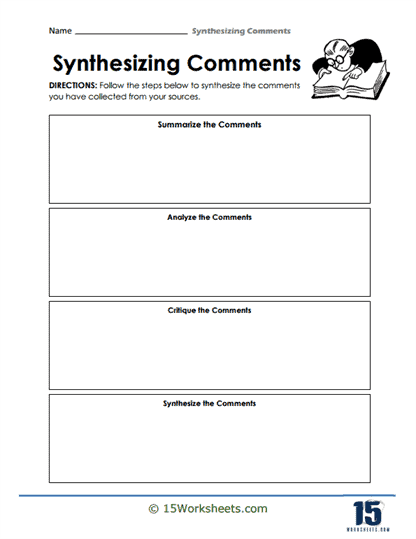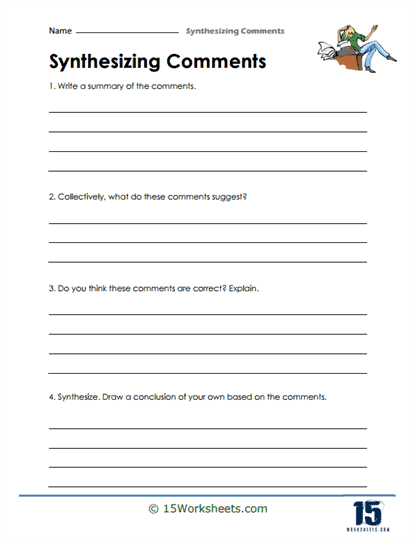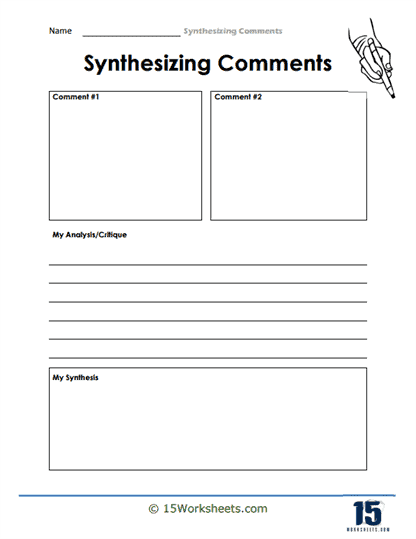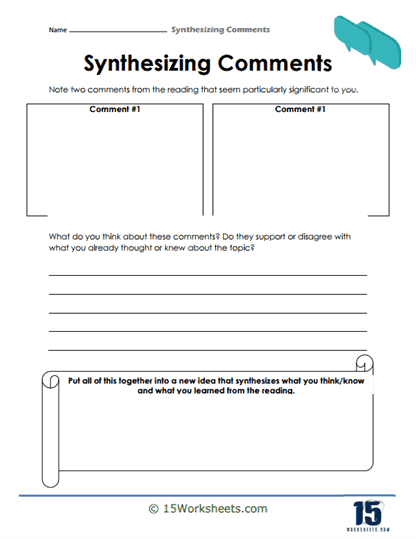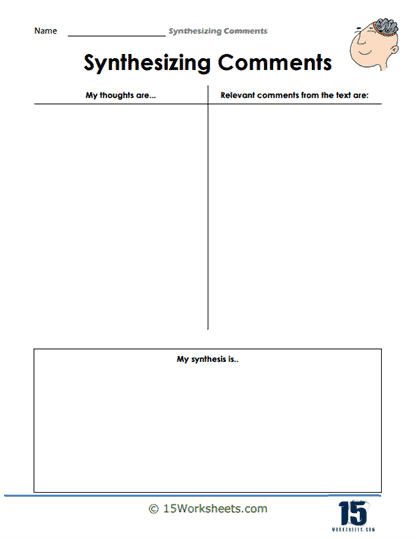Making Comments Worksheets
All About These 15 Worksheets
This series of 15 worksheets is an engaging and comprehensive resource designed to help students develop essential communication skills while honing their ability to analyze and synthesize information effectively. The exercises provide students with a structured approach to making comments, expressing opinions, and engaging in thoughtful discussions, while also promoting the critical thinking skills necessary for synthesizing multiple viewpoints.
The worksheets in this series are designed to empower students to express themselves confidently and engage in constructive conversations. They cover a wide range of topics related to making comments, active listening, constructive criticism, respectful communication, and the art of synthesizing diverse viewpoints. The series offers a variety of activities and exercises suitable for students of different age groups and proficiency levels. Through these worksheets, students will:
- Learn all about synthesizing comments and summarizing them;
- Master synthesizing ideas and comments;
- Compare and contrast comments and identify patterns and themes before synthesis;
- Gain self-awareness and identify areas for improvement;
- And set goals for further enhancing their communication and critical thinking abilities.
Overall, this series provides teachers with a valuable resource to help their students develop effective communication skills, critical thinking abilities, and the capacity to synthesize multiple perspectives. By using these worksheets, students will become more adept at expressing their thoughts, engaging in meaningful discussions, and synthesizing information from diverse sources. This series also empowers students to become confident communicators and critical thinkers who can analyze, evaluate, and synthesize information to form well-informed opinions.
Synthesizing vs. Summarizing
Synthesizing and summarizing are two distinct processes used in information processing and communication. While they share similarities, they serve different purposes and involve different approaches. Here’s an overview of each concept:
- Summarizing involves condensing a larger piece of information into a shorter form while retaining the key points and main ideas. It focuses on extracting the essential elements, omitting less important details, and presenting a concise version of the original content. Summaries are often used to provide a quick overview or digest of longer texts, articles, reports, or speeches. They aim to provide a reader with the main insights without going into extensive detail.
- Synthesizing, on the other hand, involves combining multiple sources or perspectives to create a new understanding or insight. It goes beyond summarizing individual sources and involves analyzing, integrating, and organizing information from various viewpoints to generate a comprehensive understanding or original idea. Synthesis requires critical thinking, evaluation, and the identification of relationships between different pieces of information. It often results in the creation of new knowledge or the development of fresh perspectives.
In essence, summarizing is about condensing and presenting the main points of a single source, whereas synthesizing involves analyzing multiple sources and merging them to produce a new understanding or perspective. While summarizing is more focused on simplifying and compressing information, synthesis is geared towards generating a cohesive whole by incorporating diverse viewpoints.
Both summarizing and synthesizing are valuable skills for effective communication and information processing. They enable individuals to distill complex information, improve comprehension, and convey important concepts concisely. The choice between summarizing and synthesizing depends on the specific objective, context, and desired outcome of the communication or information processing task.

